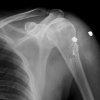MacTech
Member
I never really got seriously into rifles until recently, I was happy plinking with .22 rifles and pistols, and centerfire handguns, I tended to lean more towards handguns as I just had more fun with them, (.22, 9mm, .38SPL, 357 Mag, .45 ACP)
A couple weeks ago, I picked up a Savage 111 in .30-06, aside from a rather inaccurate Mosin M-44, I was never really into big bore rifles
That changed once I got my Savage on the range, it had the exhilaration, recoil, and noise and fury of the M-44, but has turned out far more accurate
one thing that amazes me is the amount of punch rifle rounds carry, they fully eclipse handgun rounds, I now understand why many say "all handgun rounds suck" or "handgun rounds are all marginal" or Clint Smith's saying "the handgun is used to fight your way back to your rifle/shotgun"
just pulling some numbers from my Lee Reloading manual bears this out....
Maximum loads from the Lee manual, bullet weights (jacketed) as close as possible across the line, cartridges i've fired
.38 Spl: 170 grn 888 FPS, 15,900 PSI
9mm: 147 grn 1047 FPS, 31,900 PSI
.357 Mag: 170 grn 1662 FPS, 40,800 PSI
.45 ACP: 185 grn 1066 FPS, 20,600 PSI
.45 ACP: 230 grn 942 FPS, 20,500 PSI
7.62x54R: 180 grn 2692 FPS, 48,504 PSI
.30-06: 180 grn 2800 FPS, 57,000 PSI
On average, roughly double the FPS and PSI ratings....
Although that 9mm 147 grain hot load (7.2 grains Accur #7 under a 147 grain jacketed bullet) looks pretty impressive, at least on paper...
Rifle rounds sure do pack a wallop!
A couple weeks ago, I picked up a Savage 111 in .30-06, aside from a rather inaccurate Mosin M-44, I was never really into big bore rifles
That changed once I got my Savage on the range, it had the exhilaration, recoil, and noise and fury of the M-44, but has turned out far more accurate
one thing that amazes me is the amount of punch rifle rounds carry, they fully eclipse handgun rounds, I now understand why many say "all handgun rounds suck" or "handgun rounds are all marginal" or Clint Smith's saying "the handgun is used to fight your way back to your rifle/shotgun"
just pulling some numbers from my Lee Reloading manual bears this out....
Maximum loads from the Lee manual, bullet weights (jacketed) as close as possible across the line, cartridges i've fired
.38 Spl: 170 grn 888 FPS, 15,900 PSI
9mm: 147 grn 1047 FPS, 31,900 PSI
.357 Mag: 170 grn 1662 FPS, 40,800 PSI
.45 ACP: 185 grn 1066 FPS, 20,600 PSI
.45 ACP: 230 grn 942 FPS, 20,500 PSI
7.62x54R: 180 grn 2692 FPS, 48,504 PSI
.30-06: 180 grn 2800 FPS, 57,000 PSI
On average, roughly double the FPS and PSI ratings....
Although that 9mm 147 grain hot load (7.2 grains Accur #7 under a 147 grain jacketed bullet) looks pretty impressive, at least on paper...
Rifle rounds sure do pack a wallop!



